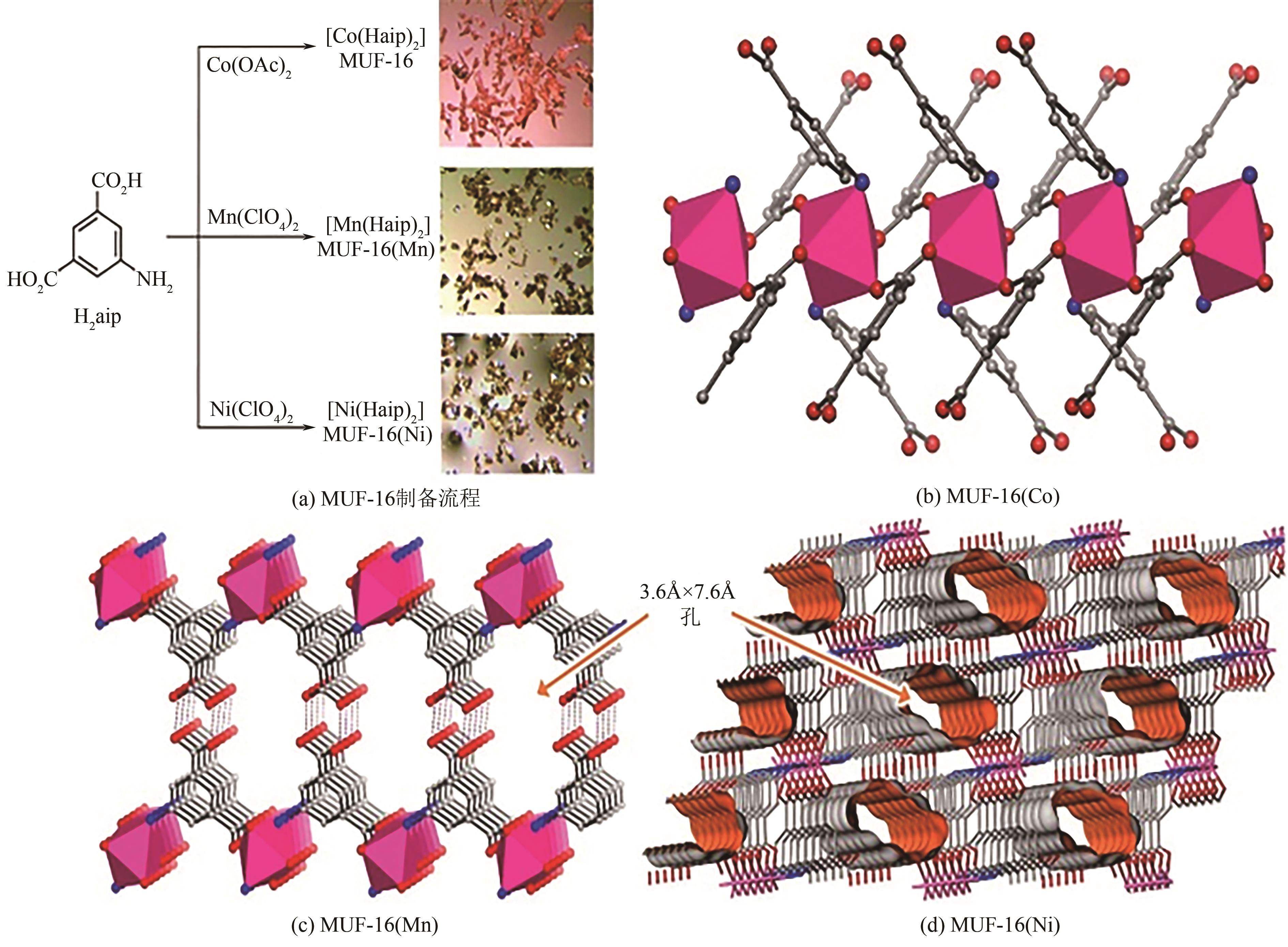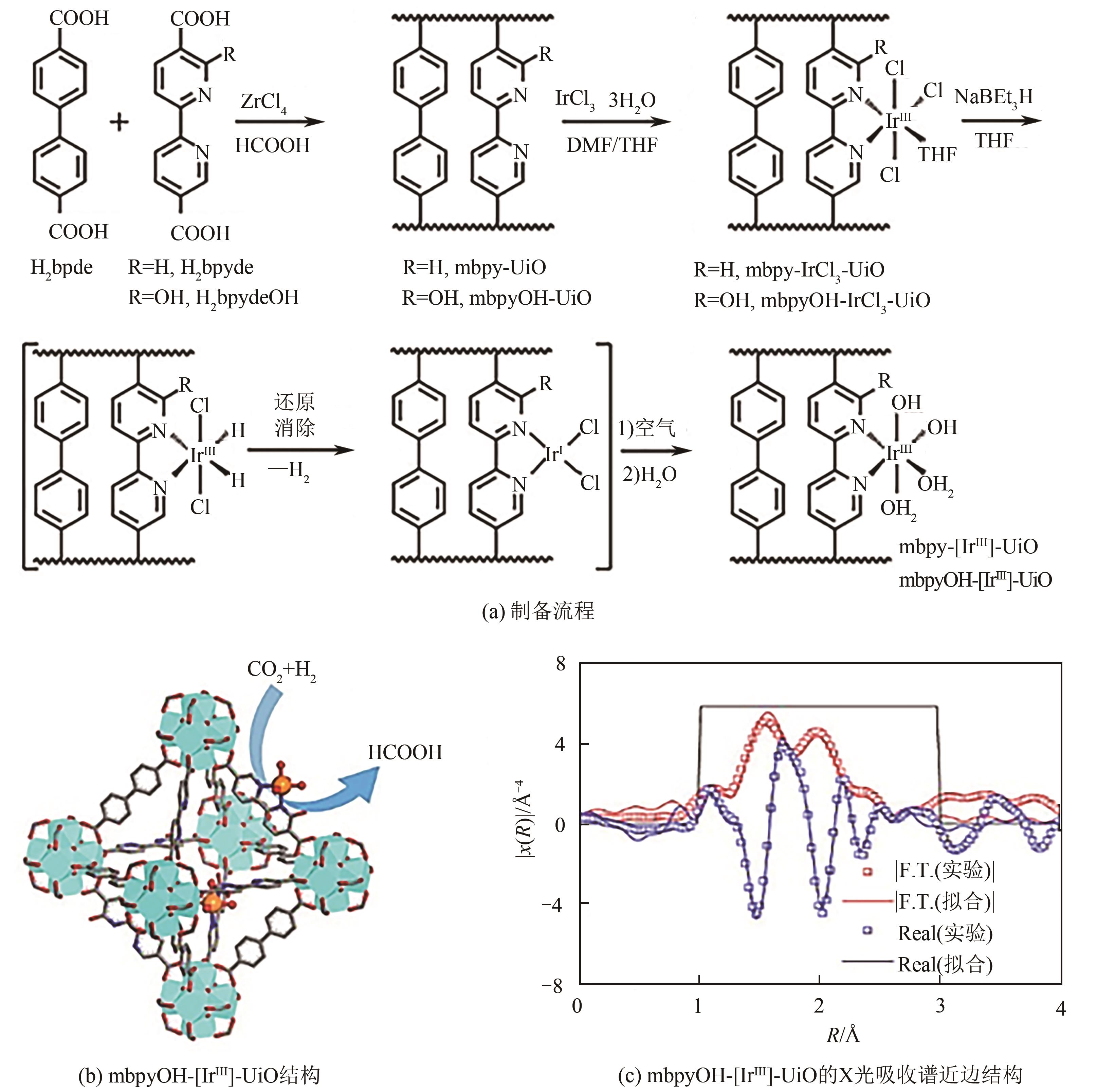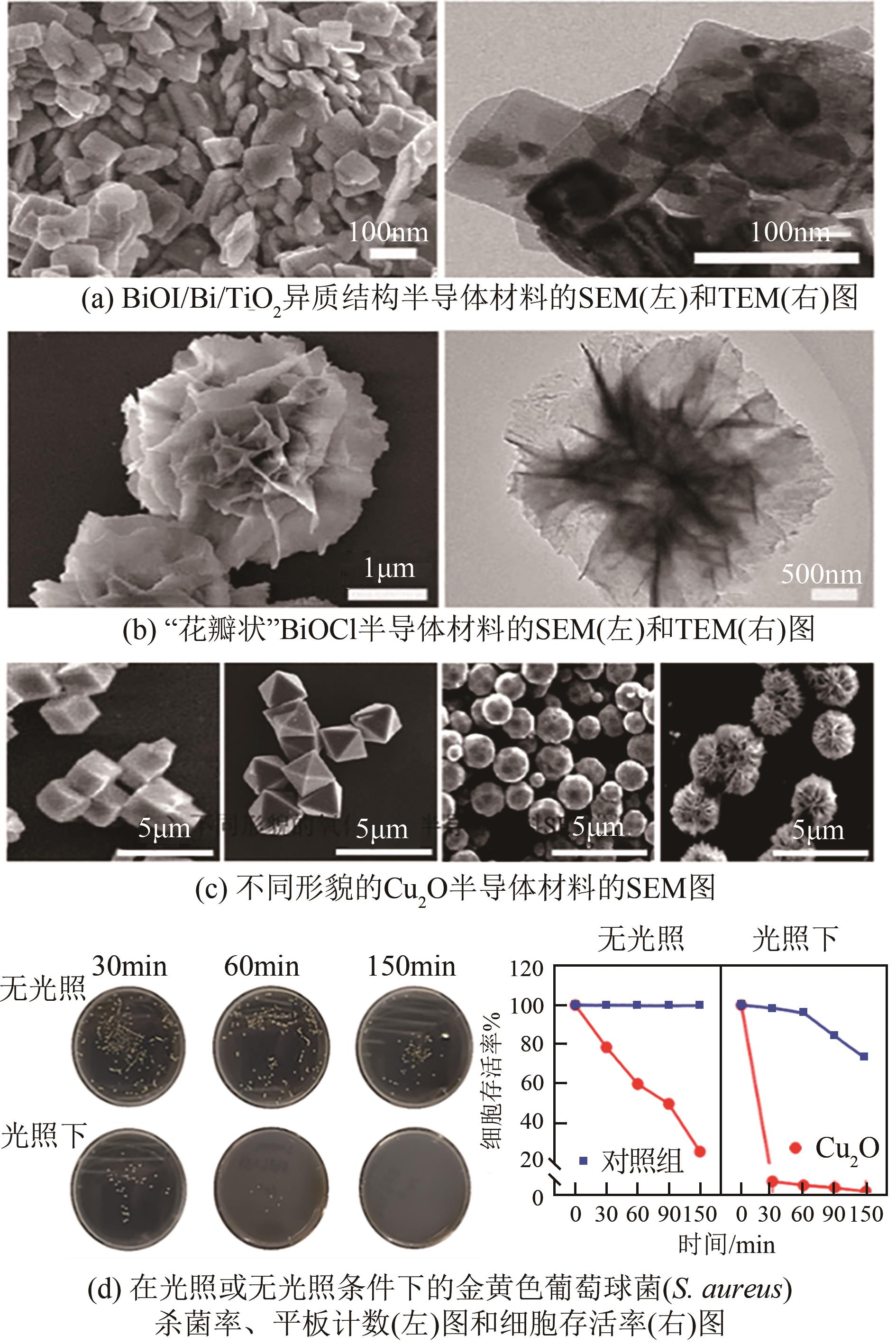化工进展 ›› 2021, Vol. 40 ›› Issue (9): 5145-5155.DOI: 10.16085/j.issn.1000-6613.2021-0395
催化反应技术在滨海电厂的CO2资源化利用和海洋防污领域的应用
刘安仓1( ), 陈川2, 陈建忠1, 陈裕忠1, 朱晨亮1, 江永1, 鲁福身2, 王双喜2, 钟子宜3, 宋一兵2(
), 陈川2, 陈建忠1, 陈裕忠1, 朱晨亮1, 江永1, 鲁福身2, 王双喜2, 钟子宜3, 宋一兵2( )
)
- 1.华能(广东)能源开发有限公司,广东 广州 510627
2.汕头大学化学系,广东 汕头 515063
3.广东以色列理工学院,广东 汕头 515063
-
收稿日期:2021-03-01修回日期:2021-06-07出版日期:2021-09-05发布日期:2021-09-13 -
通讯作者:宋一兵 -
作者简介:刘安仓(1968—),男,硕士,高级工程师,研究方向为大型发电企业的清洁生产。E-mail:hngd111@126.com 。 -
基金资助:中国华能集团科技计划(HNKJ19-G011);李嘉诚基金会跨学科研究项目(2020LKSFG09A);广东省教育厅资助项目(2018KTSCX063)
Application of catalytic reaction for CO2 resource utilization and marine antifouling in coastal power plants
LIU Ancang1( ), CHEN Chuan2, CHEN Jianzhong1, CHEN Yuzhong1, ZHU Chenliang1, JIANG Yong1, LU Fushen2, WANG Shuangxi2, ZHONG Ziyi3, SONG Yibing2(
), CHEN Chuan2, CHEN Jianzhong1, CHEN Yuzhong1, ZHU Chenliang1, JIANG Yong1, LU Fushen2, WANG Shuangxi2, ZHONG Ziyi3, SONG Yibing2( )
)
- 1.Huaneng (Guangdong) Energy Development Co. , Ltd. , Guangzhou 510627, Guangdong, China
2.Department of Chemistry, Shantou University, Shantou 515063, Guangdong, China
3.Guangdong Technion-Israel Institute of Technology, Shantou 515063, Guangdong, China
-
Received:2021-03-01Revised:2021-06-07Online:2021-09-05Published:2021-09-13 -
Contact:SONG Yibing
摘要:
二氧化碳(CO2)减排和海洋生物污损防治是滨海火电厂亟待解决的重大课题。近年来,CO2固体吸附材料及新能源催化反应技术的快速发展,推动了碳捕集与利用技术(CCU)的实用化进程。在燃煤火电厂原有的基础上增加碳捕集与利用技术,将其改造成碳捕集与CO2资源化电厂,有望从根本上实现CO2减排的目标,是火电企业未来发展的方向。另外,洁净能源驱动的催化反应技术也已延伸至海洋生物污损防治领域,并取得了积极的成效。本文综述了固体CO2吸附材料研发的新进展,重点介绍了金属有机框架(MOF)材料结构改性和功能化修饰对提高CO2选择性吸附性能等方面的研究成果,并基于滨海火电厂的生产实况和能源资源优势,分析、总结了热催化、光/电催化反应技术在CO2资源化利用及生物污损防治等方面的研究现状和存在的问题,提出并论证了利用光触媒涂层阻断或抑制海洋生物黏附与生长的污损防护策略及其在具体场景中应用的可行性。最后从环保和实用化的角度对滨海电厂在CO2减排和生物污损防治技术方面的发展趋势进行了展望。
中图分类号:
引用本文
刘安仓, 陈川, 陈建忠, 陈裕忠, 朱晨亮, 江永, 鲁福身, 王双喜, 钟子宜, 宋一兵. 催化反应技术在滨海电厂的CO2资源化利用和海洋防污领域的应用[J]. 化工进展, 2021, 40(9): 5145-5155.
LIU Ancang, CHEN Chuan, CHEN Jianzhong, CHEN Yuzhong, ZHU Chenliang, JIANG Yong, LU Fushen, WANG Shuangxi, ZHONG Ziyi, SONG Yibing. Application of catalytic reaction for CO2 resource utilization and marine antifouling in coastal power plants[J]. Chemical Industry and Engineering Progress, 2021, 40(9): 5145-5155.
| 1 | 韩学义. 电力行业二氧化碳捕集、利用与封存现状与展望[J]. 中国资源综合利用, 2020, 38(2): 110-117. |
| HAN Xueyi. Current situation and prospect of carbon dioxide capture, utilization and storage in electric power industry[J]. China Resources Comprehensive Utilization, 2020, 38(2): 110-117. | |
| 2 | 中国电力企业管理, 中国电力企业联合会. 中国电力行业年度发展报告2020[EB/OL]. [2020-06-12]. . |
| China Power Enterprise Management, China Electricity Council (CEC).China power industry annual development report 2020[EB/OL]. [2020-06-12]. . | |
| 3 | 张树龙, 陆程, 李京, 等. 海水直流冷却水系统海生物防治技术研究[J]. 给水排水, 2020, 56(S1): 142-145. |
| ZHANG Shulong, LU Cheng, LI Jing, et al. Research on marine biological control technology of seawater DC cooling water system[J]. Water & Wastewater Engineering, 2020, 56(S1): 142-145. | |
| 4 | CUI X J, HUANG R, DENG D H. Catalytic conversion of C1 molecules under mild conditions[J]. EnergyChem, 2021, 3(1): 100050. |
| 5 | NIE X W, LI W H, JIANG X, et al. Recent advances in catalytic CO2 hydrogenation to alcohols and hydrocarbons[J]. Advances in Catalysis, 2019, 65: 121-233. |
| 6 | HE H B, LI R, YANG Z H, et al. Preparation of MOFs and MOFs derived materials and their catalytic application in air pollution: a review[J]. Catalysis Today, 2021, 375: 10-29. |
| 7 | ZHANG G, RUAN J Z, DU T T. Recent advances on photocatalytic and electrochemical oxidation for ammonia treatment from water/wastewater[J]. ACS ES&T Engineering, 2021, 1(3): 310-325. |
| 8 | RODRÍGUEZ-GONZÁLEZ V, OBREGÓN S, PATRÓN-SOBERANO O A, et al. An approach to the photocatalytic mechanism in the TiO2-nanomaterials microorganism interface for the control of infectious processes[J]. Applied Catalysis B: Environmental, 2020, 270: 118853. |
| 9 | 张美霞. 滨海电厂新型电解电极材料制备及其防污行为初步研究[D]. 青岛: 中国科学院大学(中国科学院海洋研究所), 2017. |
| ZHANG Meixia. Preparation and characterization of novel electrolytic antifouling anode materials[D]. Qingdao: The Institute of Oceanology, Chinese Academy of Sciences, 2017. | |
| 10 | CRIADO Y A, ARIAS B, ABANADES J C. Calcium looping CO2 capture system for back-up power plants[J]. Energy & Environmental Science, 2017, 10(9): 1994-2004. |
| 11 | XIAO S N, LIU H L, GAO H X, et al. Kinetics and mechanism study of homogeneous reaction of CO2 and blends of diethanolamine and monoethanolamine using the stopped-flow technique[J]. Chemical Engineering Journal, 2017, 316: 592-600. |
| 12 | DUTCHER B, FAN M, RUSSELL A G. Amine-based CO2 capture technology development from the beginning of 2013-a review[J]. ACS Applied Materials & Interfaces, 2015, 7(4): 2137-2148. |
| 13 | 彭召静, 赵彦杰, 黄成德, 等. 用于燃烧后CO2捕集系统的胺基固态吸附材料研究进展[J]. 化工进展, 2018, 37(2): 610-620. |
| PENG Zhaojing, ZHAO Yanjie, HUANG Chengde, et al. Recent advances in amine-based solid sorbents for post-combustion CO2 capture[J]. Chemical Industry and Engineering Progress, 2018, 37(2): 610-620. | |
| 14 | GUO Q S, ZHANG Q H, WANG H Z, et al. Core-shell structured ZnO@Cu-Zn-Al layered double hydroxides with enhanced photocatalytic efficiency for CO2 reduction[J]. Catalysis Communications, 2016, 77: 118-122. |
| 15 | ANTZARA A, HERACLEOUS E, LEMONIDOU A A. Improving the stability of synthetic CaO-based CO2 sorbents by structural promoters[J]. Applied Energy, 2015, 156: 331-343. |
| 16 | KATO M, NAKAGAWA K, ESSAKI K, et al. Novel CO2 absorbents using lithium-containing oxide[J]. International Journal of Applied Ceramic Technology, 2005, 2(6): 467-475. |
| 17 | KARKA S, KODUKULA S, NANDURY S V, et al. Polyethylenimine-modified zeolite 13X for CO2 capture: adsorption and kinetic studies[J]. ACS Omega, 2019, 4(15): 16441-16449. |
| 18 | RAO L L, LIU S F, WANG L L, et al. N-doped porous carbons from low-temperature and single-step sodium amide activation of carbonized water chestnut shell with excellent CO2 capture performance[J]. Chemical Engineering Journal, 2019, 359: 428-435. |
| 19 | KONG X Y, LI S, STRØMME M, et al. Synthesis of porous organic polymers with tunable amine loadings for CO2 capture: balanced physisorption and chemisorption[J]. Nanomaterials, 2019, 9(7): E1020. |
| 20 | LIU S, LIU L T, SUN L X, et al. Improved CO2 capture and separation performances of a Cr-based metal-organic framework induced by post-synthesis modification of amine groups[J]. Polyhedron, 2018, 156: 195-199. |
| 21 | DRAGE T C, ARENILLAS A, SMITH K M, et al. Thermal stability of polyethylenimine based carbon dioxide adsorbents and its influence on selection of regeneration strategies[J]. Microporous and Mesoporous Materials, 2008, 116(1/2/3): 504-512. |
| 22 | AZCUNE I, GARCÍA I, CARRASCO P M, et al. Facile and scalable synthesis of nanoporous materials based on poly(ionic liquid)s[J]. ChemSusChem, 2014, 7(12): 3407-3412. |
| 23 | LIN A, IBRAHIM A A, ARAB P, et al. Palladium nanoparticles supported on Ce-metal-organic framework for efficient CO oxidation and low-temperature CO2 capture[J]. ACS Applied Materials & Interfaces, 2017, 9(21): 17961-17968. |
| 24 | QAZVINI O T, BABARAO R, TELFER S G. Selective capture of carbon dioxide from hydrocarbons using a metal-organic framework[J]. Nature Communications, 2021, 12(1): 197. |
| 25 | LIN Y C, YAN Q J, KONG C L, et al. Polyethyleneimine incorporated metal-organic frameworks adsorbent for highly selective CO2 capture[J]. Scientific Reports, 2013, 3: 1859. |
| 26 | 王晓光, 刘岱, 陈绍云, 等. 五乙烯六胺改性金属有机骨架材料MIL-101(Cr)对CO2的吸附性能[J]. 燃料化学学报, 2017, 45(4): 484-490. |
| WANG Xiaoguang, LIU Dai, CHEN Shaoyun, et al. Performance of pentaethylenehexamine modified MIL-101(Cr) metal-organic framework in CO2 adsorption[J]. Journal of Fuel Chemistry and Technology, 2017, 45(4): 484-490. | |
| 27 | 王之婧, 王俊超, 赵行乐, 等. CO2在氨基改性MIL-101(Cr)中吸附的分子模拟[J]. 无机化学学报, 2018, 34(11): 1966-1974. |
| WANG Zhijing, WANG Junchao, ZHAO Xingle, et al. Molecular simulation for CO2 adsorption in amine-functionalized MIL-101(Cr)[J]. Chinese Journal of Inorganic Chemistry, 2018, 34(11): 1966-1974. | |
| 28 | DEMESSENCE A, D’ALESSANDRO D M, FOO M L, et al. Strong CO2 binding in a water-stable, triazolate-bridged metal-organic framework functionalized with ethylenediamine[J]. Journal of the American Chemical Society, 2009, 131(25): 8784-8786. |
| 29 | KHAN J, IQBAL N, ASGHAR A, et al. Novel amine functionalized metal organic framework synthesis for enhanced carbon dioxide capture[J]. Materials Research Express, 2019, 6(10): 105539. |
| 30 | 成康, 张庆红, 康金灿, 等. 二氧化碳直接制备高值化学品中的接力催化方法[J]. 中国科学: 化学, 2020, 50(7): 743-755. |
| CHENG Kang, ZHANG Qinghong, KANG Jincan, et al. Relay catalysis in the direct conversion of carbon dioxide to high-value chemicals[J]. Scientia Sinica (Chimica), 2020, 50(7): 743-755. | |
| 31 | ETIM U J, SONG Y B, ZHONG Z Y. Improving the Cu/ZnO-based catalysts for carbon dioxide hydrogenation to methanol, and the use of methanol as a renewable energy storage media[J]. Frontiers in Energy Research, 2020, 8: 545431. |
| 32 | KARELOVIC A, RUIZ P. The role of copper particle size in low pressure methanol synthesis via CO2 hydrogenation over Cu/ZnO catalysts[J]. Catalysis Science & Technology, 2015, 5(2): 869-881. |
| 33 | XU J H, SU X, LIU X Y, et al. Methanol synthesis from CO2 and H2 over Pd/ZnO/Al2O3: catalyst structure dependence of methanol selectivity[J]. Applied Catalysis A: General, 2016, 514: 51-59. |
| 34 | HARTADI Y, WIDMANN D, BEHM R J. CO2 hydrogenation to methanol on supported Au catalysts under moderate reaction conditions: support and particle size effects[J]. ChemSusChem, 2015, 8(3): 456-465. |
| 35 | JIANG X, JIAO Y, MORAN C, et al. CO2 hydrogenation to methanol on PdCu bimetallic catalysts with lower metal loadings[J]. Catalysis Communications, 2019, 118: 10-14. |
| 36 | TANG Q L, JI W C, RUSSELL C K, et al. Understanding the catalytic mechanisms of CO2 hydrogenation to methanol on unsupported and supported Ga-Ni clusters[J]. Applied Energy, 2019, 253: 113623. |
| 37 | WANG J Y, LIU C Y, SENFTLE T P, et al. Variation in the In2O3 crystal phase alters catalytic performance toward the reverse water gas shift reaction[J]. ACS Catalysis, 2020, 10(5): 3264-3273. |
| 38 | MARTIN O, MARTÍN A J, MONDELLI C, et al. Indium oxide as a superior catalyst for methanol synthesis by CO2 hydrogenation[J]. Angewandte Chemie International Edition, 2016, 55(21): 6261-6265. |
| 39 | LI H, WANG L, DAI Y, et al. Synergetic interaction between neighbouring platinum monomers in CO2 hydrogenation[J]. Nature Nanotechnology, 2018, 13(5): 411-417. |
| 40 | CHEN Y, LI H, ZHAO W, et al. Optimizing reaction paths for methanol synthesis from CO2 hydrogenation via metal-ligand cooperativity[J]. Nature Communications, 2019, 10(1): 1885. |
| 41 | AN B, ZENG L Z, JIA M, et al. Molecular iridium complexes in metal-organic frameworks catalyze CO2 hydrogenation via concerted proton and hydride transfer[J]. Journal of the American Chemical Society, 2017, 139(49): 17747-17750. |
| 42 | OCHEDI F O, LIU D J, YU J L, et al. Photocatalytic, electrocatalytic and photoelectrocatalytic conversion of carbon dioxide: a review[J]. Environmental Chemistry Letters, 2021, 19(2): 941-967. |
| 43 | HALMANN M. Photoelectrochemical reduction of aqueous carbon dioxide on p-type gallium phosphide in liquid junction solar cells[J]. Nature, 1978, 275(5676): 115-116. |
| 44 | 周威, 郭君康, 申升, 等. 光电催化二氧化碳还原研究进展[J]. 物理化学学报, 2020, 36(3): 71-81. |
| ZHOU Wei, GUO Junkang, SHEN Sheng, et al. Progress in photoelectrocatalytic reduction of carbon dioxide[J]. Acta Physico-Chimica Sinica, 2020, 36(3): 71-81. | |
| 45 | ZHANG N, LONG R, GAO C, et al. Recent progress on advanced design for photoelectrochemical reduction of CO2 to fuels[J]. Science China Materials, 2018, 61(6): 771-805. |
| 46 | 张甄, 王宝冬, 赵兴雷, 等. 光电催化二氧化碳能源化利用研究进展[J]. 化工进展, 2019, 38(9): 3927-3935. |
| ZHANG Zhen, WANG Baodong, ZHAO Xinglei, et al. Research progress of energy utilization of CO2 by photoelectrocatalysis[J]. Chemical Industry and Engineering Progress, 2019, 38(9): 3927-3935. | |
| 47 | JIA Y J, XU Y J, NIE R, et al. Artificial photosynthesis of methanol from carbon dioxide and water via a Nile red-embedded TiO2 photocathode[J]. Journal of Materials Chemistry A, 2017, 5(11): 5495-5501. |
| 48 | XU Y J, JIA Y J, ZHANG Y Q, et al. Photoelectrocatalytic reduction of CO2 to methanol over the multi-functionalized TiO2 photocathodes[J]. Applied Catalysis B: Environmental, 2017, 205: 254-261. |
| 49 | WANG L W, JIA Y J, NIE R, et al. Ni-foam-supported and amine-functionalized TiO2 photocathode improved photoelectrocatalytic reduction of CO2 to methanol[J]. Journal of Catalysis, 2017, 349: 1-7. |
| 50 | ASADI M, KIM K, LIU C, et al. Nanostructured transition metal dichalcogenide electrocatalysts for CO2 reduction in ionic liquid[J]. Science, 2016, 353(6298): 467-470. |
| 51 | DENG X, LI R, WU S K, et al. Metal-organic framework coating enhances the performance of Cu2O in photoelectrochemical CO2 reduction[J]. Journal of the American Chemical Society, 2019, 141(27): 10924-10929. |
| 52 | SCHULTZ M P, BENDICK J A, HOLM E R, et al. Economic impact of biofouling on a naval surface ship[J]. Biofouling, 2011, 27(1): 87-98. |
| 53 | 曲政, 庞其伟. 滨海电厂循环冷却水系统的腐蚀与防护[J]. 管道技术与设备, 2003(1): 35-37. |
| QU Zheng, PANG Qiwei. Corrosion and protection of coastal power plant circulating cooling water system[J]. Pipeline Technique and Equipment, 2003(1): 35-37. | |
| 54 | 黄运涛, 彭乔. 海洋生物污损的防治方法及研究进展[J]. 全面腐蚀控制, 2004, 18(1): 3-5. |
| HUANG Yuntao, PENG Qiao. The prevention method and research development of marine fouling[J]. Total Corrosion, 2004, 18(1): 3-5. | |
| 55 | 陈建忠, 陈川, 陈裕忠, 等. 海洋生物污损防治策略及研究进展[J]. 汕头大学学报(自然科学版), 2020, 35(2): 3-10. |
| CHEN Jianzhong, CHEN Chuan, CHEN Yuzhong, et al. Strategies and research status of marine antifouling[J]. Journal of Shantou University (Natural Science Edition), 2020, 35(2): 3-10. | |
| 56 | YEON D K, KO S, JEONG S, et al. Oxidation-mediated, zwitterionic polydopamine coatings for marine antifouling applications[J]. Langmuir, 2019, 35(5): 1227-1234. |
| 57 | KENDALL K. The adhesion and surface energy of elastic solids[J]. Journal of Physics D: Applied Physics, 1971, 4(8): 1186-1195. |
| 58 | BAI X B, LI J L, ZHU L H, et al. Effect of Cu content on microstructure, mechanical and anti-fouling properties of TiSiN-Cu coating deposited by multi-arc ion plating[J]. Applied Surface Science, 2018, 427: 444-451. |
| 59 | ASHRAF P M, EDWIN L. Nano copper oxide incorporated polyethylene glycol hydrogel: an efficient antifouling coating for cage fishing net[J]. International Biodeterioration & Biodegradation, 2016, 115: 39-48. |
| 60 | CHEN S S, MA C F, ZHANG G Z. Biodegradable polymers for marine antibiofouling: poly(ε-caprolactone)/poly(butylene succinate) blend as controlled release system of organic antifoulant[J]. Polymer, 2016, 90: 215-221. |
| 61 | BISWAL L, NAYAK S, PARIDA K. Recent progress on strategies for the preparation of 2D/2D MXene/g-C3N4 nanocomposites for photocatalytic energy and environmental applications[J]. Catalysis Science & Technology, 2021, 11(4): 1222-1248. |
| 62 | CORONADO J M, FRESNO F, HERNÁNDEZ-ALONSO M D, et al. Design of advanced photocatalytic materials for energy and environmental applications[M]. London: Springer London, 2013. |
| 63 | SELIM M S, EL-SAFTY S A, EL-SOCKARY M A, et al. Smart photo-induced silicone/TiO2 nanocomposites with dominant [110] exposed surfaces for self-cleaning foul-release coatings of ship hulls[J]. Materials & Design, 2016, 101: 218-225. |
| 64 | XIANG Z B, WANG Y, ZHANG D, et al. BiOI/BiVO4 p-n heterojunction with enhanced photocatalytic activity under visible-light irradiation[J]. Journal of Industrial and Engineering Chemistry, 2016, 40: 83-92. |
| 65 | XIANG Z B, WANG Y, YANG Z Q, et al. Heterojunctions of β-AgVO3/BiVO4 composites for enhanced visible-light-driven photocatalytic antibacterial activity[J]. Journal of Alloys and Compounds, 2019, 776: 266-275. |
| 66 | WANG Y, LONG Y, ZHANG D. Facile in situ growth of high strong BiOI network films on metal wire meshes with photocatalytic activity[J]. ACS Sustainable Chemistry & Engineering, 2017, 5(3): 2454-2462. |
| 67 | ZHANG C C, CHEN W B, HU D R, et al. Design and in situ construct BiOI/Bi/TiO2 photocatalysts with metal-mediated heterostructures employing oxygen vacancies in TiO2 nanosheets[J]. Green Energy & Environment, 2020. . |
| 68 | XIONG L B, NG T W, YU Y, et al. N-type Cu2O film for photocatalytic and photoelectrocatalytic processes: its stability and inactivation of E. coli[J]. Electrochimica Acta, 2015, 153: 583-593. |
| 69 | SREVARIT W, MOONMANGMEE S, PHAPUGRANGKUL P, et al. Photoelectrocatalytic H2 evolution enhancement over CuO-decorated TiO2 nanocatalysts and promoting E. coli degradation[J]. Journal of Alloys and Compounds, 2021, 859: 157818. |
| 70 | RATHER R A, LO I M C. Photoelectrochemical sewage treatment by a multifunctional g-C3N4/Ag/AgCl/BiVO4 photoanode for the simultaneous degradation of emerging pollutants and hydrogen production, and the disinfection of E. coli[J]. Water Research, 2020, 168: 115166. |
| 71 | 曲艺. 改性MoS2电极光电催化灭活大肠杆菌性能研究[D]. 哈尔滨: 哈尔滨工业大学, 2019. |
| QU Yi. Study on photoelectrocatalytic inactivation of Escherichia coli by modified MoS2 electrode[D]. Harbin: Harbin Institute of Technology, 2019. | |
| 72 | KWON J H, JEONG E G, JEON Y, et al. Design of highly water resistant, impermeable, and flexible thin-film encapsulation based on inorganic/organic hybrid layers[J]. ACS Applied Materials & Interfaces, 2019, 11(3): 3251-3261. |
| 73 | SELIM M S, SHENASHEN M A, ELMARAKBI A, et al. Synthesis of ultrahydrophobic and thermally stable inorganic-organic nanocomposites for self-cleaning foul release coatings[J]. Chemical Engineering Journal, 2017, 320: 653-666. |
| [1] | 张明焱, 刘燕, 张雪婷, 刘亚科, 李从举, 张秀玲. 非贵金属双功能催化剂在锌空气电池研究进展[J]. 化工进展, 2023, 42(S1): 276-286. |
| [2] | 时永兴, 林刚, 孙晓航, 蒋韦庚, 乔大伟, 颜彬航. 二氧化碳加氢制甲醇过程中铜基催化剂活性位点研究进展[J]. 化工进展, 2023, 42(S1): 287-298. |
| [3] | 谢璐垚, 陈崧哲, 王来军, 张平. 用于SO2去极化电解制氢的铂基催化剂[J]. 化工进展, 2023, 42(S1): 299-309. |
| [4] | 杨霞珍, 彭伊凡, 刘化章, 霍超. 熔铁催化剂活性相的调控及其费托反应性能[J]. 化工进展, 2023, 42(S1): 310-318. |
| [5] | 郑谦, 官修帅, 靳山彪, 张长明, 张小超. 铈锆固溶体Ce0.25Zr0.75O2光热协同催化CO2与甲醇合成DMC[J]. 化工进展, 2023, 42(S1): 319-327. |
| [6] | 王正坤, 黎四芳. 双子表面活性剂癸炔二醇的绿色合成[J]. 化工进展, 2023, 42(S1): 400-410. |
| [7] | 高雨飞, 鲁金凤. 非均相催化臭氧氧化作用机理研究进展[J]. 化工进展, 2023, 42(S1): 430-438. |
| [8] | 王乐乐, 杨万荣, 姚燕, 刘涛, 何川, 刘逍, 苏胜, 孔凡海, 朱仓海, 向军. SCR脱硝催化剂掺废特性及性能影响[J]. 化工进展, 2023, 42(S1): 489-497. |
| [9] | 邓丽萍, 时好雨, 刘霄龙, 陈瑶姬, 严晶颖. 非贵金属改性钒钛基催化剂NH3-SCR脱硝协同控制VOCs[J]. 化工进展, 2023, 42(S1): 542-548. |
| [10] | 许友好, 王维, 鲁波娜, 徐惠, 何鸣元. 中国炼油创新技术MIP的开发策略及启示[J]. 化工进展, 2023, 42(9): 4465-4470. |
| [11] | 耿源泽, 周俊虎, 张天佑, 朱晓宇, 杨卫娟. 部分填充床燃烧器中庚烷均相/异相耦合燃烧[J]. 化工进展, 2023, 42(9): 4514-4521. |
| [12] | 程涛, 崔瑞利, 宋俊男, 张天琪, 张耘赫, 梁世杰, 朴实. 渣油加氢装置杂质沉积规律与压降升高机理分析[J]. 化工进展, 2023, 42(9): 4616-4627. |
| [13] | 王晋刚, 张剑波, 唐雪娇, 刘金鹏, 鞠美庭. 机动车尾气脱硝催化剂Cu-SSZ-13的改性研究进展[J]. 化工进展, 2023, 42(9): 4636-4648. |
| [14] | 王鹏, 史会兵, 赵德明, 冯保林, 陈倩, 杨妲. 过渡金属催化氯代物的羰基化反应研究进展[J]. 化工进展, 2023, 42(9): 4649-4666. |
| [15] | 高彦静. 单原子催化技术国际研究态势分析[J]. 化工进展, 2023, 42(9): 4667-4676. |
| 阅读次数 | ||||||
|
全文 |
|
|||||
|
摘要 |
|
|||||




